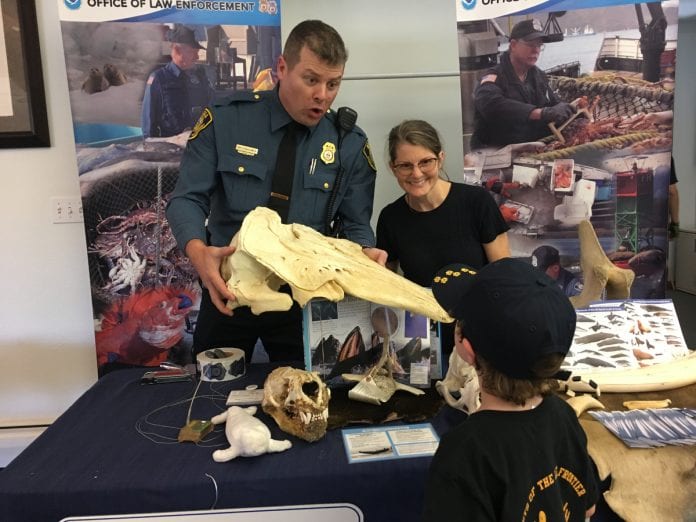
Citizen scientists of all ages turned out on Sept. 15 to help NOAA Fisheries count endangered Cook Inlet beluga whales and learn more about the importance of healthy marine habitat.
The second annual beluga whales count drew over 2,000 people to 14 scientist-manned viewing stations along Cook Inlet from Homer to the Matanuska-Susitna Valley in the morning and the afternoon beluga festival at the Alaska Zoo in Anchorage.
Both events were free and open to the public as part of NOAA Fisheries’ effort to increase public awareness and stewardship of Cook Inlet belugas, who were listed as endangered under the Endangered Species Act in 2008.

Participating educators at the zoo included Rick Rowland, land and natural resources manager for the Tyonek Native Corp., who said the corporation’s presence there was to remind people that there is still an interest in subsistence hunting, but that won’t happen again until the beluga population increases. The tribe decided 14 years ago to cease those subsistence hunts because of the low population of whales, Rowland said. More research is needed to determine why the population is so low and what needs to be done to assure recovery, he said.
In 2011, Cook Inlet was designated as critical habitat for the species, whose numbers are currently estimated at from 300 to 400 whales. Early estimates on the number of belugas spotted this year were at least 100, compared to 255 belugas sighted during the 2017 event.
Belugas are a small toothed whale, also known as the white whale because of the white coloration of adults. Beluga caves born from June through October have a dark to brownish gray coloring which becomes lighter as their get older and eventually turns white. Adult belugas are about 12 to 14 feet long, weigh about 3,000 pounds and may live 60 years or more. Their diet consists of a wide variety of fish and invertebrates, including eulachon (hooligan or candlefish) and Pacific salmon when they are abundant in the spring and summer. Little information is available on their prey in winter months.
NOAA Fisheries scientists working on a five-year action plan to boost the population of these whales say potential threats rage from natural disasters and toxic spills to disease agents, including pathogens, parasites and algal blooms, to habitat degradation and a reduction in their food sources. A copy of the Cook Inlet Beluga Recovery plan, which was completed in December 2016, is online at https://alaskafisheries.noaa.,gov/pr/cib-recovery-plan.

NOAA’s partners for this year’s event including the Alaska Department of Fish and Game, The Alaska Zoo, Alaska SeaLife Center, Beluga Whale Alliance, Cook Inlet Beluga Photo-ID Project, Defenders of Wildlife, Friends of the Anchorage Coastal Wildlife Refuge, Bureau of Ocean Energy Management, U.S. Forest Service, Alaska Wildlife Conservation Center, University of Alaska Kachemak Bay Campus, and a number of committed individuals.














